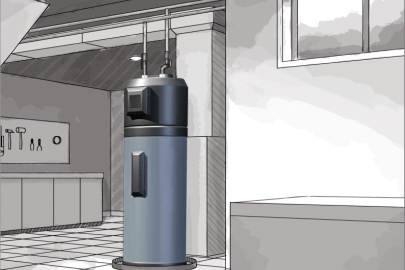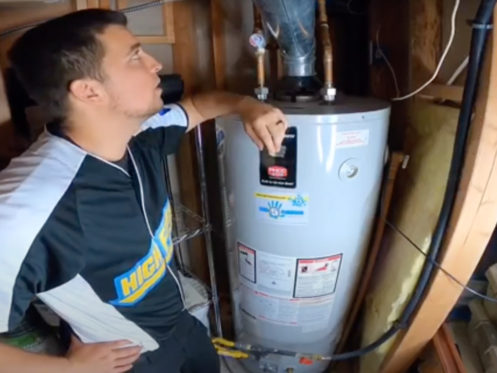Just about everyone seems to have his or her own theory in relation to How to Maintain a Hot Water Heater in a Few Simple Steps.

Hot water is important for day-to-day convenience, whether it's for a refreshing shower or cleaning recipes. To ensure your warm water system runs effectively and lasts much longer, regular maintenance is essential. This article provides sensible ideas and understandings on just how to keep your home's warm water system to avoid interruptions and expensive repair services.
Intro
Keeping your home's warm water system could appear daunting, yet with a few simple actions, you can ensure it runs smoothly for many years to come. This guide covers every little thing from comprehending your warm water system to do it yourself maintenance tips and understanding when to hire expert aid.
Relevance of Keeping Your Warm Water System
Routine maintenance not just expands the life-span of your warm water system yet also ensures it operates efficiently. Overlooking maintenance can result in reduced effectiveness, higher energy expenses, and also early failing of the system.
Signs Your Hot Water System Needs Upkeep
Understanding when your warm water system needs interest can protect against major problems. Look out for indications such as inconsistent water temperature level, strange noises from the heating system, or rustic water.
Recognizing Your Warm Water System
Prior to diving right into maintenance tasks, it's handy to comprehend the basic parts of your warm water system. Usually, this consists of the water heater itself, pipes, anode rods, and temperature level controls.
Month-to-month Upkeep Tasks
Normal month-to-month checks can assist catch minor issues before they rise.
Purging the Hot Water Heater
Purging your water heater removes sediment build-up, boosting performance and extending its life.
Checking and Replacing Anode Rods
Anode poles protect against corrosion inside the tank. Examining and replacing them when worn out is essential.
Examining and Adjusting Temperature Settings
Changing the temperature settings guarantees optimal performance and safety.
DIY Tips for Maintenance
You can perform several upkeep jobs on your own to maintain your warm water system in top condition.
Checking for Leaks
Routinely inspect pipes and links for leakages, as these can cause water damages and higher costs.
Checking Pressure Alleviation Valves
Checking the pressure safety valve ensures it operates properly and prevents too much pressure build-up.
Protecting Pipes
Shielding hot water pipelines decreases warmth loss and can conserve energy.
When to Call an Expert
While DIY upkeep is advantageous, some problems call for expert expertise.
Complicated Concerns Needing Specialist Assistance
Instances include significant leaks, electric problems, or if your water heater is continually underperforming.
Routine Specialist Maintenance Perks
Professional maintenance can consist of extensive examinations, tune-ups, and guaranteeing compliance with safety and security criteria.
Conclusion
Routine upkeep of your home's hot water system is necessary for performance, longevity, and expense financial savings. By following these suggestions and understanding when to look for specialist help, you can make certain a reputable supply of warm water without unexpected disruptions.
How to Maintain an Instant Hot Water Heater
Before tinkering with your hot water heater, make sure that it’s not powered on. You also have to turn off the main circuit breaker and shut off the main gas line to prevent accidents. Also turn off the water valves connected to your unit to prevent water from flowing into and out of the appliance. 2. When you’re done, you have to detach the purge valves’ caps. These look like the letter “T†and are situated on either side of the water valves. Doing so will release any pressure that has accumulated inside the valves while at the same time avoid hot water from shooting out and burning your skin. 3. When the purge valves’ caps are removed, you have to connect your hosing lines to the valves. Your unit should have come with three hoses but if it didn’t, you can purchase these things from any hardware or home repair shops. You can also get them from retail stores that sell water heating systems. Read the user’s manual and follow it to complete this task properly. When the hosing lines are connected, open the purge port’s valves. 4. You should never use harsh chemical cleaners or solutions when cleaning your unit. Make use of white vinegar instead. It should be undiluted and you’ll probably use about 2 gallons. 5. Now flush your water heater. This task should probably take about 40 minutes. We can’t give you specific directions for this because the procedure is carried out depending on the type, model and brand of your heater. With that being said, refer to the user’s manual. 6. When you’re done draining the unit, you have to turn off the purge port valves again. Remove the hosing lines that you earlier installed on each of the water valves. Put the valve caps (purge port) back in their respective places and be very careful so as not to damage the rubber discs that are found inside these caps. 7. Now that everything’s back in place, check your user’s manual again to find out how to reactivate your water heating system. 8. Once it is working, turn one of your hot water faucets on just to let air pass through the heater’s water supply pipes. Leave the tap on until water flows smoothly out of it. https://www.orrplumbing.com/blog/2014/september/how-to-maintain-an-instant-hot-water-heater/

Hopefully you enjoyed reading our post about How to Maintain Your Water Heater & Prolong its Life. Many thanks for finding the time to read our posting. Sharing is nice. Helping others is fun. I thank you for reading our article about Tips on Maintaining a Water Heater.
Free Estimates